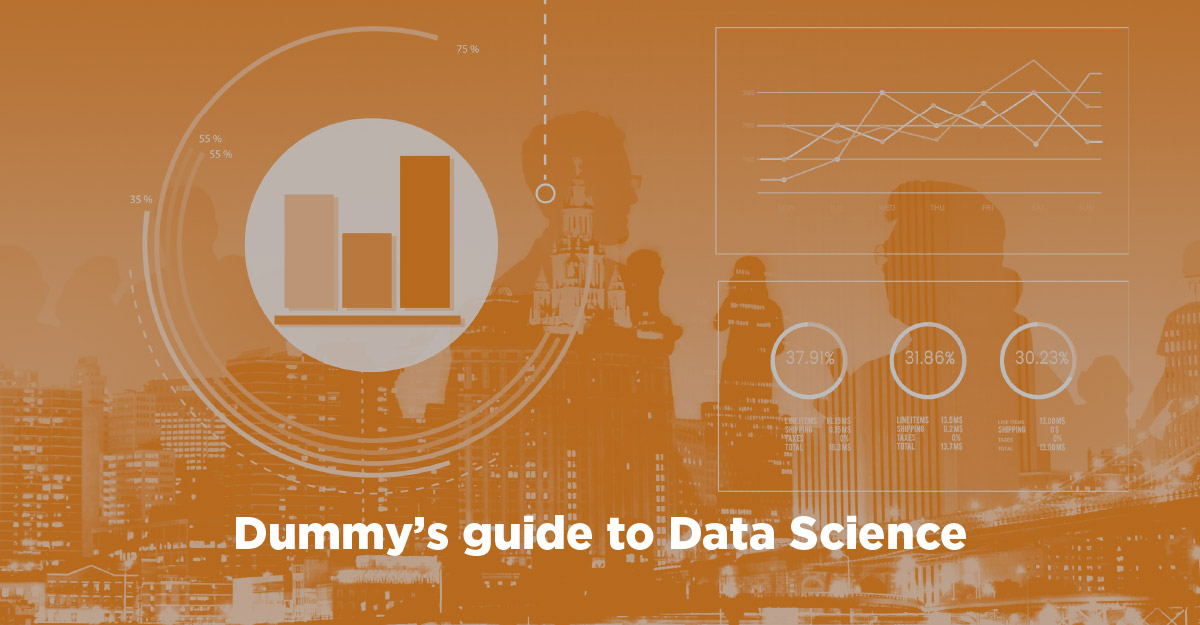
“Numbers never lie.” Why? This is because they are a collection of data represented in a numerical manner after extensive research. Opinions can lie, because they are formed based on the stories. But numbers don’t lie. And as a result, when a situation demands validation, numbers – in the form of statistics – provide a reliable source of information to bank on.
But what happens when you have statistics, information, various algorithms and tons of data? How would a person sort out what is required, and what is completely unrelated to the current task at hand? This is where Data Science comes in. Although Data Science is a multi-disciplinary field, at its core it is a study of humongous volumes of data, be it numbers or information, and finding out similarities and patterns in order to derive relevant information. Turing award winner Jim Gray had imagined data science as the fourth paradigm of science, as everything is changing due to the information explosion.

The reason behind the study of data science is simple – data driven analysis enables a person to make better decisions based on the patterns that are found. These patterns and the resulting analysis can then be used to perform a thorough search throughout the large sets of data in an effcient manner.
In order for a person to be well-versed in data science, he or she should have experience in various fundamental areas that make up the field of Data Science. Advanced Computing is the first area that will be looked at, since Data Science relies on digital data. But apart from this, the concerned personnel should also be skilled in mathematics (particularly statistics) as well as communications (both written and verbal). Lastly, the person should have the knowledge of the domain they are working in. The combined knowledge of all of these areas encompass the field of data science, and understanding the finer nuances of each of these fields enables a person to work seamlessly.
Any Data Science project consists of six steps:
1. Concept Study – The first step in any Data Science project is to understand the area of the industry in which the project is going to take place. Any and all relevant information pertaining to the problem statement has to be collected and analysed. This information can be in the form of logs, social media posts or even census datasets from different companies.
2. Data Preparation – After all the relevant information has been collected, the raw data is put through a series of preparation methods to remove any unnecessary data or to fill in any gaps that may be present. This is usually done through various approaches such as:
a. Data Integration – removing redundancies and resolving conflicts
b. Data Transformation – normalise, transform and finally aggregate the data
c. Data Reduction – reducing size of datasets without affecting the quality
d. Data Cleaning – correcting inconsistent data
3. Model Planning – Once the data set is ready, a model needs to be created in order to solve the problem statement of the project. The datasets are divided into two parts – first one to be used to build the model (training data), and the second one to be used to test the model (testing data). The planning of a suitable model is done through EDA or Exploratory Data Analysis. Tools such as MATLAB or Python can be used to plan the model.
4. Model Building – Once the planning is done, the model is built. Python code packages such as NumPy and Pandas are used to build the model quickly and easily. If the testing dataset does not yield the required results, then the model is rebuild using a different processor.
5. Communication – Once the testing produces results, they are communicated to the relevant authorities in the organisation. This is important because validation from higher authorities is required before the whole process can be put into operation. If any issues are found, then Step 4 is repeated again.
6. Operationalize – After the relevant people give their approval, the final model with its code, required documents and the reports are thoroughly tested for any discrepancies, post which the model is deployed in real time production.

Data Science has grown to become an integral part of various fields, ranging from code centric fields like gaming and assistant voice AI to more data driven fields such as healthcare and recommendation systems for social media. Almost any organisation where tons of data need to be sorted employs data scientists or data analysts to aid them in sorting out the relevant data.
Since Data Science Industry is still in its infancy, there are some problems which still need to be tackled. One of the glaring issues is the lack of infrastructure to provide a vast talent pool of data scientists still persists in various countries. This also leads to lesser people knowing the actual meaning and as a result the benefits of data science. The laws that protect the data of customers also prove to be an obstacle for data scientists to gain access to required data. Lastly, the financial issues due to lack of support from the management level also leads to a stunted growth of the industry.
In the coming years, the Data Science Industry will grow on to become the base rock of any organisation due to the information explosion. The growth of any industry will depend on the data which has been combined, sorted and analysed by the data scientists. By incorporating data science into their business, companies will be able to analyse and predict the growth as well as foresee any decline or threats to their company.




